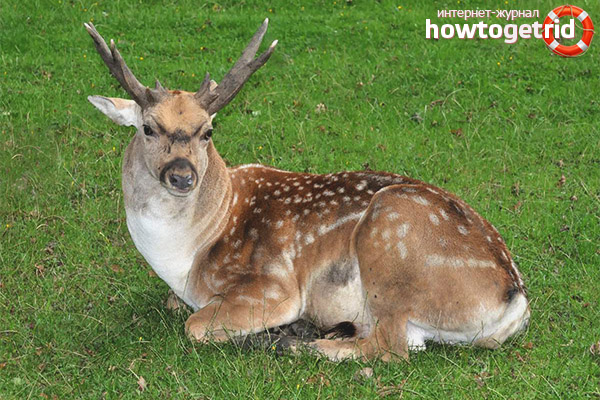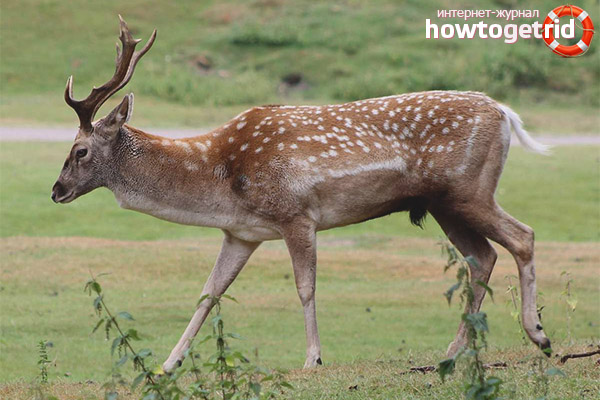The content of the article
The beautiful graceful creation of Iranian fallow deer is a relative of all ungulates and the genus Dama. They differ from other subspecies in larger size and brighter color.
The back and neck of the representative of this species are spotted. And along the spine they are in continuous stripes. Also, the difference from other species is the absence of a shovel on the horns of males.
The history of the Iranian fallow deer: amazing, but true
The history of this fallow deer begins long before our era. The first petroglyphs in Iran, where leaders hunted these graceful animals, date back to 200-600 BC. Charles Reed spoke about this in his scientific article in the mid-60s of the twentieth century. Surprisingly, the fact that after the discovery of this species of animals was already considered extinct. The remains were found, cave paintings, references in other sources, but not a single living individual was found until 1955. It was believed that the last animals of this species were killed at the beginning of the twentieth century in Iran and a little later - in Iraq. However, in the last century they still decided to send an expeditionary group to one of the regions of Iran, where, according to assumptions, several adult animals, representatives of the genus Dama, could still remain.
The expeditionary team was lucky: they managed to catch a young male Iranian fallow deer, and after a while the female. There was a hope that the population could be revived. Animals were sent for research and breeding in West Germany. Only five years later, the specialists managed to cross the pair and get the first cubs. But here again fate fell "on its hind legs": in the same year the male died, but at that time they did not find another representative.
Abundance and habitat
Experts believe that these animals can also be in Iraq in the channels of certain rivers. And also in areas where there are sources of malaria, and there is no population. However, scientists are also aware that if the fallow deer is in Iraq, then in a very small number. Since the indicated terrain is hardly passable, checking guesses at a given moment in time remains a difficult task.
Iranian fallow deer suffers from poaching; its numbers are greatly exterminated in its habitats. Only dense vegetation and the complexity of patency of the wild helps these creatures to hide. However, this vegetation is being cut down and used as fuel, and therefore habitats are being reduced. Moreover, in Iran there is a problem with arable and agricultural land. And the places where these fallow deer live are quite fertile. There is a threat of turning these lands into arable land if the local population grows in size.
Conservation Measures

Experts believe that one of the most optimal and real opportunities to save fallow deer as a species is to catch more healthy individuals and resettle them in other regions. Already a view under the reliable protection of institutions involved in the rescue of endangered animals. Commissioners also suggest acclimatizing individuals in Europe. It is worth considering the fact that the crossing of the Iranian fallow deer with the closest relatives from neighboring forms of ungulates does not bring results.The fact is, the Iranian fallow deer is severely affected by a lack of genetic diversity. If a litter from crossbreeding appears, then it is either not viable or unable to breed.
Specialists involved in endangered species and game affairs are well aware that time should not be missed. And decisive action must be taken. Unfortunately, there may not even be time to plan and design tasks. Today, specialized tribal groups are being created, which are located in the reserve on the territory of Iran. Its area is very small, only 20 hectares. As soon as the number of Iranian fallow deer increases by at least a few pairs, they will be resettled in other protected areas, reserves and reserves. They will also make an attempt to settle individuals in other countries with a similar climate. This will help to insure against loss of numbers as a result of diseases and natural circumstances.
The global animal rights community looks forward to a serious approach to the work of its Iranian wildlife counterparts. And that success will be achieved on the issue of the revival of the Iranian fallow deer population.










Submit